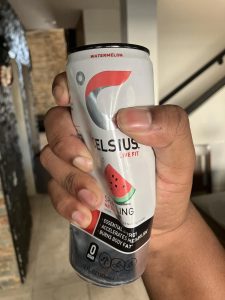A physical barrier between two loved ones, taking a pill every day or inserting a plastic rod into the arm. Some people have to try it all before they find a solution. For Lacey Currey it is a stretch of sticky plastic on her skin. She has never been happier with her birth control.
Mankind has come a long way from using sheepskin and home remedies to prevent pregnancy. Now there are more types of birth control than ever that provide safe and consistent experiences for the sexually active. To choose the right one, for some, can require exploration. Overall most can discover a method that is affordable and easy to stick with.

In the United States, gradual advancements in contraceptive sciences arose by the 1950s. This is a result of three pioneers of the cause: Margaret Sanger, Gregory Pincus and John Rock. Sanger, a feminist activist, played an important role in securing Pincus the resources to conduct studies and experiments that would lead to the invention of the first combined oral contraceptive pill, commonly referred to as “the pill.”
The pill is a hormonal form of birth control that, with a daily dose, alters a woman’s period and prevents pregnancy. But this can be more than just a contraceptive. Women take the pill to regulate their period, relieve pain caused by cramps, lessen PMS and even help reduce the risk of ovarian cysts. Because it regulates hormones, men and women can also be prescribed this form of birth control to minimize hormonal acne.
The pill led to all other forms of hormonal birth control such as Nexplanon. It is a flexible, plastic rod that can be inserted into the upper arm for up to four years. It requires no maintenance and is easily reversible.
Fullerton College student Lacey Currey has gone through the list of hormonal birth control. After trying and disliking multiple before, she tried Nexplanon out for three months before it was added to her discard list.
“Every time I took antibiotics, it made me bleed,” Currey says. The hormones released by the implant interacted with her prescribed medication which resulted in an adverse reaction.
One in 10 women stopped using Nexplanon due to an unfavorable bleeding pattern. Currey is one of them. She is now on the patch, another form of birth control placed on the skin that releases hormones directly into the bloodstream. It is left on for a week before being replaced with a fresh one. She likes the control it provides, as she can discontinue use to her discretion, unlike the implant which must be removed by a medical professional.
For others, Nexplanon works like a charm. “It’s like the easiest thing and I hate IUDs,” says Natalie Erickson. IUDs are a hormonal or copper device that is inserted into a female’s uterus with a string attached to the bottom that leads out of the vagina. This prevents the fertilization of an egg. They have a 99% success rate, and while they have a high satisfaction rate of about 80%, some women find them uncomfortable.
About 70% of women experience discomfort during insertion, of which about 20% require follow ups or maintenance. This can lead some women to remove them completely.
Discomfort or sensation from an IUD shouldn’t be detected. Joseph Khan, a Garden Grove obstetrician-gynecologist, says the most common side effects are irregular bleeding, spotting and cramps.
There are also contraceptives that protect from STIs during penetrative sex. Condoms stand the test of time and are the simplest form of birth control with a 98% success rate when used correctly. Best yet, it is the only other form of birth control for males at the moment, besides a vasectomy.

There is a considerable amount of pressure on women to take birth control when sexually active. Most birth control methods are for women and in long term relationships, they are more likely to carry the burden. According to the National Library of Medicine, when excluding the use of condoms, only 5% of married men have had vasectomies compared to 77% of married women being on birth control.
Amy Streavel, senior director of education programs for Planned Parenthood, educates young adults, parents and training professionals about reproductive health. She feels one of the most important programs offered by Planned Parenthood is sex education for young men in juvenile detention facilities. This includes a “male responsibility presentation,” in which she explains the role men have in pregnancies and stresses personal responsibility.
“I actually received abstinence-only education,” Streavel says. She was brought up with a lack of answers. This only increased the amount of questions she had about sex. Now her life is dedicated to ensure others learn more than “don’t have sex.”
With all the different types of birth control on the market, it may feel overwhelming to find the “perfect one.” When it comes to birth control, size doesn’t matter. Everyone’s body is different and everyone will have different experiences with each birth control. Whether you are looking for protection against STIs, pregnancy or are looking for help with regulating hormones, there are plenty of birth control products to pick from.


















